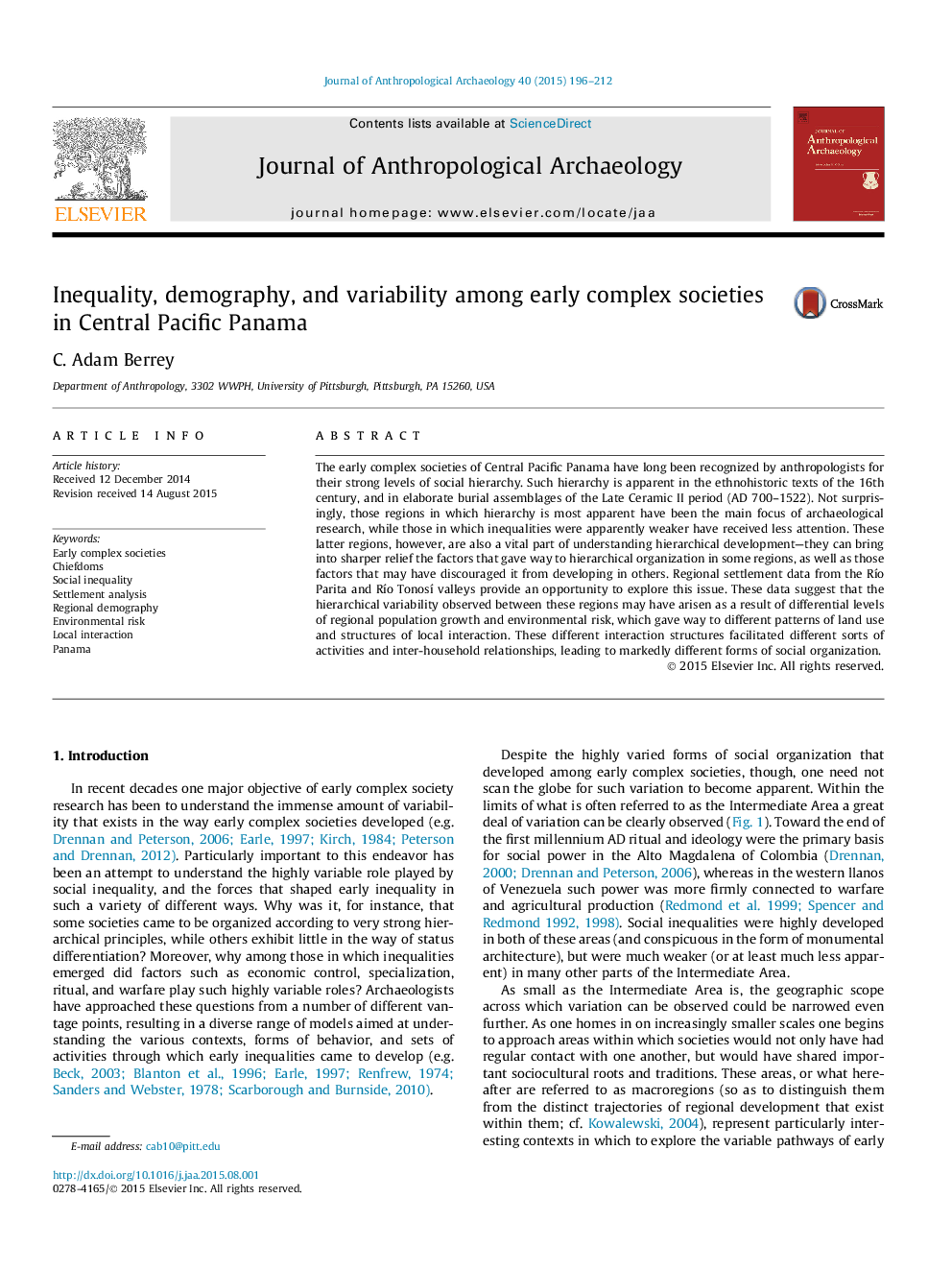| کد مقاله | کد نشریه | سال انتشار | مقاله انگلیسی | نسخه تمام متن |
|---|---|---|---|---|
| 7440540 | 1483850 | 2015 | 17 صفحه PDF | دانلود رایگان |
عنوان انگلیسی مقاله ISI
Inequality, demography, and variability among early complex societies in Central Pacific Panama
ترجمه فارسی عنوان
نابرابری، جمعیت شناسی و تنوع در جوامع پیچیده اولیه در پاناما اقیانوس آرام
دانلود مقاله + سفارش ترجمه
دانلود مقاله ISI انگلیسی
رایگان برای ایرانیان
کلمات کلیدی
موضوعات مرتبط
علوم انسانی و اجتماعی
علوم انسانی و هنر
تاریخ
چکیده انگلیسی
The early complex societies of Central Pacific Panama have long been recognized by anthropologists for their strong levels of social hierarchy. Such hierarchy is apparent in the ethnohistoric texts of the 16th century, and in elaborate burial assemblages of the Late Ceramic II period (AD 700-1522). Not surprisingly, those regions in which hierarchy is most apparent have been the main focus of archaeological research, while those in which inequalities were apparently weaker have received less attention. These latter regions, however, are also a vital part of understanding hierarchical development-they can bring into sharper relief the factors that gave way to hierarchical organization in some regions, as well as those factors that may have discouraged it from developing in others. Regional settlement data from the RÃo Parita and RÃo Tonosà valleys provide an opportunity to explore this issue. These data suggest that the hierarchical variability observed between these regions may have arisen as a result of differential levels of regional population growth and environmental risk, which gave way to different patterns of land use and structures of local interaction. These different interaction structures facilitated different sorts of activities and inter-household relationships, leading to markedly different forms of social organization.
ناشر
Database: Elsevier - ScienceDirect (ساینس دایرکت)
Journal: Journal of Anthropological Archaeology - Volume 40, December 2015, Pages 196-212
Journal: Journal of Anthropological Archaeology - Volume 40, December 2015, Pages 196-212
نویسندگان
C. Adam Berrey,
